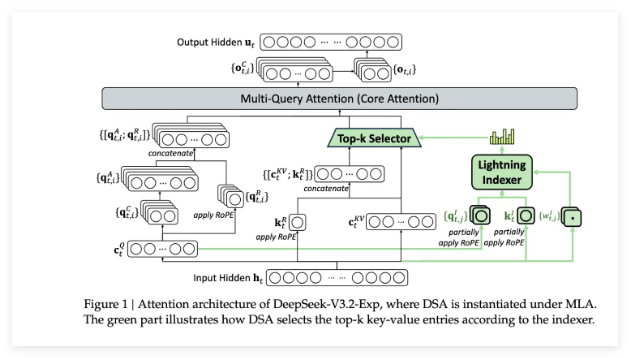节前,我们星球组织了一场算法岗技术&面试讨论会,邀请了一些互联网大厂朋友、参加社招和校招面试的同学。
针对算法岗技术趋势、大模型落地项目经验分享、新手如何入门算法岗、该如何准备、面试常考点分享等热门话题进行了深入的讨论。
合集:
《大模型面试宝典》(2024版) 正式发布!
大模型函数调用(function calling)功能,能让大模型调用成千上万的工具API,赋予大模型更多的外部知识,使得大模型能力变得更加强大。
本文将会介绍如何使用 LLaMa-Factory 这个大模型微调框架,对 Qwen1.5-4B 模型进行微调,实现 function calling 功能,使得大模型具有工具调用能力。
如何微调大模型的function calling能力?
首先,训练数据集是关键,我们在这里使用Glaive AI生成的工具调用数据集,也可以在HuggingFace找到function calling相关的数据集,该数据集包含用户(human)、模型(gpt)、工具调用(function_call)和工具调用结果(observation)四种不同角色,以及工具列表(tools)字段。
同时,我们还选择了alpaca_gpt4_en、alpaca_gpt4_zh 和 oaast_sft_zh这三种数据集,以增强大模型的通用对话能力。
其中一条样本为:
{ "conversations": [ { "from": "human", "value": "I saw a dress that I liked. It was originally priced at $200 but it's on sale for 20% off. Can you tell me how much it will cost after the discount?" }, { "from": "function_call", "value": "{\"name\": \"calculate_discount\", \"arguments\": {\"original_price\": 200, \"discount_percentage\": 20}}" }, { "from": "observation", "value": "{\"discounted_price\": 160}" }, { "from": "gpt", "value": "The dress will cost you $160 after the 20% discount." } ], "tools": "[{\"name\": \"calculate_discount\", \"description\": \"Calculate the discounted price\", \"parameters\": {\"type\": \"object\", \"properties\": {\"original_price\": {\"type\": \"number\", \"description\": \"The original price of the item\"}, \"discount_percentage\": {\"type\": \"number\", \"description\": \"The percentage of discount\"}}, \"required\": [\"original_price\", \"discount_percentage\"]}}]" } 其加工成对话样本后的格式如下:
<|im_start|>system You are a helpful assistant.You have access to the following tools: > Tool Name: calculate_discount Tool Description: Calculate the discounted price Tool Args: - original_price (number, required): The original price of the item - discount_percentage (number, required): The percentage of discount Use the following format if using a tool: Action: tool name (one of [calculate_discount]).``` Action Input: the input to the tool, in a JSON format representing the kwargs (e.g. ```{"input": "hello world", "num_beams": 5}```).``` <|im_end|> <|im_start|>user I saw a dress that I liked. It was originally priced at $200 but it's on sale for 20% off. Can you tell me how much it will cost after the discount?<|im_end|> <|im_start|>assistant Action: calculate_discount Action Input: {"original_price": 200, "discount_percentage": 20}<|im_end|> <|im_start|>user {"discounted_price": 160}<|im_end|> <|im_start|>assistant The dress will cost you $160 after the 20% discount.<|im_end|> 微调的基座模型选择Qwen1.5-4B,每个数据集最大样本量为50000,训练2轮,训练命令如下:
python src/train_bash.py \ --stage sft \ --do_train True \ --model_name_or_path /models/Qwen1.5-4B \ --finetuning_type lora \ --template qwen \ --dataset_dir data \ --dataset glaive_toolcall,alpaca_gpt4_en,alpaca_gpt4_zh,oaast_sft_zh \ --cutoff_len 1024 \ --learning_rate 5e-05 \ --num_train_epochs 2.0 \ --max_samples 50000 \ --per_device_train_batch_size 2 \ --gradient_accumulation_steps 4 \ --lr_scheduler_type cosine \ --max_grad_norm 1.0 \ --logging_steps 100 \ --save_steps 1000 \ --warmup_steps 0 \ --optim adamw_torch \ --report_to none \ --output_dir saves/Qwen1.5-4B/lora/train_2024-04-20-15-30-29 \ --fp16 True \ --lora_rank 8 \ --lora_alpha 16 \ --lora_dropout 0.1 \ --lora_target all \ --plot_loss True 在笔者的GPU上大约训练了14个小时(同时还在运行其它任务)。训练完后,将lora部分的参数与原始模型进行合并,形成新的训练后的模型(Qwen1.5-4B-agent),此时,新模型已经具有了function calling的调用能力。
测试微调后的大模型的function calling
我们来测试下训练后的大模型的function calling的能力。模型服务的部署命令如下:
python -m llmtuner.api.app --model_name_or_path /models/Qwen1.5-4B-agent --template qwen 笔者找了三个API工具来进行测试,它们的作用分别为生活垃圾分类,动漫信息查询,歌曲信息查询,API具体的入参、出参可以参考网址为:https://apifox.com/apidoc/shared-faff130e-7aa3-42da-9f93-574b16c8acda。
测试脚本如下:
# -*- coding: utf-8 -*- # @place: Pudong, Shanghai # @file: llama_factory_agent_test.py import os import json from openai import OpenAI from typing import Sequence import requests os.environ["OPENAI_BASE_URL"] = "http://localhost:50079/v1" os.environ["OPENAI_API_KEY"] = "0" def get_rubbish_category(keyword): url = f"https://api.timelessq.com/garbage?keyword={keyword}" response = requests.request("GET", url) output_str_list = [] for item in response.json()['data']: output_str_list.append(f"{item['name']}: {item['categroy']}") return '\n'.join(output_str_list) def get_song_information(keyword): url = f"https://api.timelessq.com/music/tencent/search?keyword={keyword}" response = requests.request("GET", url) song_infor = response.json()['data']['list'][0] singer = '' if not song_infor['singer'] else song_infor['singer'][0]['name'] return f"歌曲: {keyword}\n歌手: {singer}\n时长: {song_infor['interval']}秒\n专辑名称: {song_infor['albumname']}" def get_cartoon_information(title): url = f"https://api.timelessq.com/bangumi?title={title}" response = requests.request("GET", url) data = response.json()['data'][0] return f"标题: {data['title']}\n类型:{data['type']}\n语言:{data['lang']}\n出品方:{data['officialSite']}\n上映时间:{data['begin']}\n完结事件:{data['end']}" tool_map = {"get_rubbish_category": get_rubbish_category, "get_song_information": get_song_information, "get_cartoon_information": get_cartoon_information} if __name__ == "__main__": client = OpenAI() tools = [ { "type": "function", "function": { "name": "get_rubbish_category", "description": "适用于生活垃圾分类时,判断物品属于哪种类型的垃圾?", "parameters": { "type": "object", "properties": { "keyword": { "type": "string", "description": "物品名称,用于垃圾分类", }, }, "required": ["keyword"], } } }, { "type": "function", "function": { "name": "get_cartoon_information", "description": "根据用户提供的动漫标题,查询该动漫的相关信息。", "parameters": { "type": "object", "properties": { "title": { "type": "string", "description": "动漫", }, }, "required": ["title"], } } }, { "type": "function", "function": { "name": "get_song_information", "description": "根据用户提供的歌曲名称,查询歌曲相关信息,包括歌手、时长、专辑名称等。", "parameters": { "type": "object", "properties": { "keyword": { "type": "string", "description": "歌曲名称", }, }, "required": ["keyword"], } } } ] messages = [] messages.append({"role": "system", "content": "你是一个有用的小助手,请调用下面的工具来回答用户的问题,参考工具输出进行回答。"}) # messages.append({"role": "user", "content": "鸡蛋壳属于哪种类型的垃圾?"}) # messages.append({"role": "user", "content": "爱在西元前是谁唱的,来自哪张专辑?"}) messages.append({"role": "user", "content": "动漫《棋魂》是哪个国家的,什么时候上映的?"}) result = client.chat.completions.create(messages=messages, model="Qwen1.5-4B-agent", tools=tools) tool_call = result.choices[0].message.tool_calls[0].function print(tool_call) name, arguments = tool_call.name, json.loads(tool_call.arguments) messages.append({"role": "function", "content": json.dumps({"name": name, "argument": arguments}, ensure_ascii=False)}) tool_result = tool_map[name](**arguments) messages.append({"role": "tool", "content": "工具输出结果为: " + tool_result}) for msg in messages: print('--->', msg) result = client.chat.completions.create(messages=messages, model="Qwen1.5-4B-agent") print("Answer: ", result.choices[0].message.content) 测试结果如下:
问题: 鸡蛋壳属于哪种类型的垃圾?输出:
---> {'role': 'system', 'content': '你是一个有用的小助手,请调用下面的工具来回答用户的问题,参考工具输出进行回答。'} ---> {'role': 'user', 'content': '鸡蛋壳属于哪种类型的垃圾?'} ---> {'role': 'function', 'content': '{"name": "get_rubbish_category", "argument": {"keyword": "鸡蛋壳"}}'} ---> {'role': 'tool', 'content': '工具输出结果为: 熟鸡蛋壳: 湿垃圾\n生鸡蛋壳: 湿垃圾\n鸡蛋壳: 湿垃圾\n包裹着鸡蛋壳的餐巾纸: 干垃圾'} Answer: 鸡蛋壳属于湿垃圾。 输出:
---> {'role': 'system', 'content': '你是一个有用的小助手,请调用下面的工具来回答用户的问题,参考工具输出进行回答。'} ---> {'role': 'user', 'content': '爱在西元前是谁唱的,来自哪张专辑?'} ---> {'role': 'function', 'content': '{"name": "get_song_information", "argument": {"keyword": "爱在西元前"}}'} ---> {'role': 'tool', 'content': '工具输出结果为: 歌曲: 爱在西元前\n歌手: 周杰伦\n时长: 234秒\n专辑名称: 范特西'} Answer: 歌曲《爱在西元前》的演唱者是周杰伦,来自专辑《范特西》。 输出:
---> {'role': 'system', 'content': '你是一个有用的小助手,请调用下面的工具来回答用户的问题,参考工具输出进行回答。'} ---> {'role': 'user', 'content': '动漫《棋魂》是哪个国家的,什么时候上映的?'} ---> {'role': 'function', 'content': '{"name": "get_cartoon_information", "argument": {"title": "棋魂"}}'} ---> {'role': 'tool', 'content': '工具输出结果为: 标题: ヒカルの碁\n类型:tv\n语言:ja\n出品方:http://www.tv-tokyo.co.jp/anime/hikaru/\n上映时间:2001-10-10T10:27:00.000Z\n完结事件:2003-03-26T10:55:00.000Z'} Answer: 动漫《棋魂》是日本的,它于2001年10月10日上映。 总结
OpenAI模型的function calling能力无疑是让人惊讶的,但自己实现大模型的function calling能力也是值得开心的。
本文重点介绍了如何使用 LLaMa-Factory 微调框架来自己实现 function calling 能力,并在测试中验证了大模型的工具调用能力。
大模型wordapiscriptappjsonurlopenaigpt数据集stemalpacaactiontpugpt4cliassistantctollamachat



















